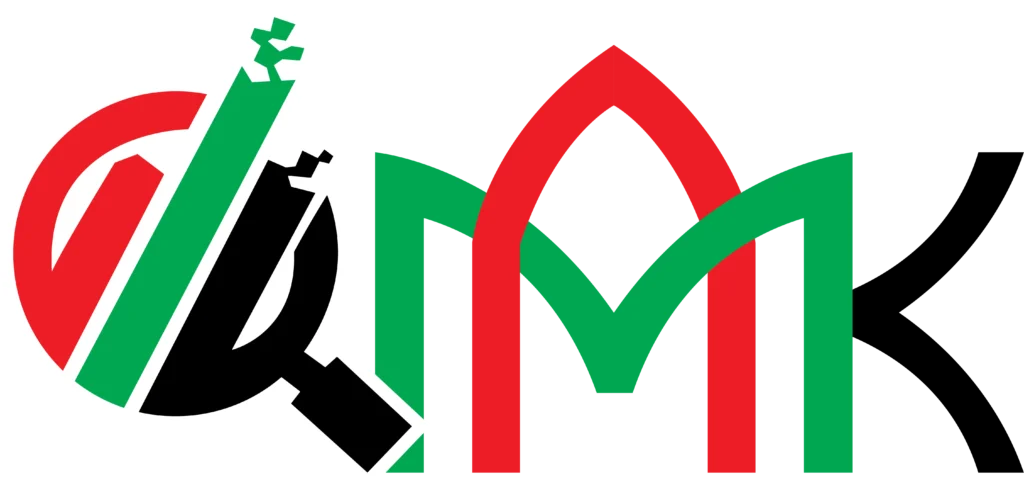Copyright Registration in UAE: A Plain-English Guide for Creators and Companies
Why Protection Matters in Today’s Creative Economy
You create value with words, code, art, music, and design. Your work carries effort and time. Your work also carries risk. People copy content online without consent. Markets move fast with digital tools. A clear copyright plan protects your rights with simple steps. A registered claim supports proof. A certificate supports swift action. A strong record supports safe deals with partners and platforms.
Copyright protection in the UAE follows federal rules. The law respects an author’s moral and economic rights. The law supports enforcement against unauthorized use. The process uses clear stages with digital filing. The process suits individuals and companies. It covers classic formats and new digital formats. You can act early with the right documents. You can defend your work with proper evidence.
Mubarak Al Ketbi (MAK) Auditing helps you map this journey. Our team prepares clean files with correct details. Our team reduces errors with proper forms. Our team guides you through fees, timelines, and replies. Our team sets your portfolio with order and clarity.
What Copyright Protection Actually Covers
Copyright protects original expression. Copyright does not protect an idea in raw form. Copyright protects the way you express that idea in text, sound, image, code, or motion. Copyright arises upon creation. Registration adds strength with official proof.
Common categories include:
- Literary works: books, blog posts, white papers, and training guides.
- Artistic works: paintings, drawings, photographs, and illustrations.
- Musical works: scores, songs, and lyrics with recorded takes.
- Software and databases: programs, apps, and structured data sets.
- Dramatic works: scripts, choreography notes, and performance plans.
- Audiovisual works: films, reels, ads, and TV content.
- Architectural works: plans, blueprints, and rendered models.
Each category needs samples in a usable format. Each filing needs a basic description. Each entry needs a clear author or rightsholder. Each package should show when and by whom the work was made.
How UAE Rules Support Authors and Owners
The UAE framework recognizes both moral and economic rights. Moral rights protect your name with correct credit. They protect integrity against harmful edits. Economic rights protect your ability to monetize. You can license rights with terms. You can assign rights by agreement. You can retain parts of your bundle to keep control.
Key benefits of a registered work:
- Public record: Your claim appears in a formal register.
- Presumption of ownership: Authorities accept your certificate as proof, subject to challenge.
- Easier enforcement: You can act faster with formal evidence in hand.
- Better deals: Platforms, brands, and agencies trust clean paperwork.
When Registration Creates Real Value
You should consider registration when any of these apply:
- You plan to license the work to clients or platforms.
- You face a crowded niche with look-alike content.
- You need investor due diligence on content assets.
- You ship code and digital art to global markets.
- You publish books, courses, or music at scale.
- You place your work into ad libraries or stock marketplaces.
Registration works like a seat belt. You may not need it each day. You will be glad it is there when a problem hits.
Documents You Should Prepare Before Filing
Strong filings start with organized materials. Build a simple pack for each work:
- ID for natural persons: passport or Emirates ID.
- Trade license for companies: current and valid.
- Proof of authorship: drafts, project files, or contracts with creators.
- Work samples: PDF for text; MP3/WAV for audio; MP4/MOV for video; source files or compiled builds for software where acceptable; images in standard formats.
- Description: title, date of creation, brief summary, and scope of rights you claim.
- Power of Attorney: if an agent submits on your behalf.
- Language: include Arabic versions where the portal requests them.
Name files with clear labels. Keep hashes or timestamps for added evidence.
The Registration Flow: From Preparation to Certificate
Use a simple sequence with checkpoints:
- Assess the work
You confirm that the work is original. You confirm you own the rights or you hold assignment agreements. You confirm no third-party content lives inside without permission. - Organize your pack
You compile IDs, licenses, samples, and descriptions. You check formats and sizes. You prepare Arabic text where needed. - Create the online account
You access the Ministry of Economy portal. You create a user with valid email and phone. You add company details if the owner is a legal person. - Complete the form
You enter title, author, year, and category. You upload files. You attach POA when an agent applies. - Pay the fee
You submit payment based on the owner type. You save the receipt with the case number. - Respond to queries
The reviewer may ask for clarifications. You provide missing pages or extra proof. You fix typos in names or dates. - Receive the certificate
You get a digital certificate. You store it with backups. You log the registration number in your rights catalog.
Mubarak Al Ketbi (MAK) Auditing keeps a tracker with statuses. We send reminder notes for each pending reply. We maintain a vault with your sealed copies and receipts.
Duration of Protection: How Long Your Rights Last
Protection terms vary by type of work. The common rule applies the life of the author plus 50 years for most categories. Some formats use different clocks:
- Applied art and photographs: often 25 years from publication.
- Broadcasts and performances: often 20 years from the broadcast or performance date.
- Anonymous or pseudonymous works: often 50 years from publication if the identity remains unknown.
- Collective works: often 50 years from first publication as a group.
Track these dates in your catalog. Use reminders five years before expiry to plan refreshes or derivative works.
What Enforcement Looks Like in Practice
An enforcement plan uses steps with rising pressure. You do not jump straight to court unless harm is large or urgent. A simple ladder works well:
- Evidence pack: screenshots, URLs, hashes, and time stamps.
- Friendly outreach: request removal or a license in polite terms.
- Takedown notices: platform or host notices with legal language.
- Cease-and-desist letter: formal notice with deadlines and remedies.
- Regulatory complaint or civil claim: initiate action with counsel.
- Criminal route: reserve for large-scale piracy or willful harm.
Penalties for infringement can include fines, damages, and in severe cases imprisonment. Seizure and destruction of infringing copies can also occur. A registered right reduces friction at each step.
Copyright vs. Trademark vs. Patent (Know the Line)
Rights serve different goals:
- Copyright protects original expression in text, sound, image, code, or video.
- Trademark protects brand identifiers like names, logos, and slogans.
- Patent protects inventions and technical solutions for a limited term.
A strong IP strategy often uses more than one right. A game can hold copyright in code and art. It can hold trademarks in the title and logo. It may hold a patent in a unique algorithm. Layering creates better shields.
Practical Tips for Digital Creators and Teams
- Watermark light assets without ruining user experience.
- Keep raw project files as proof of creation paths.
- Use version control for code and content.
- Sign contributor agreements for teams and freelancers.
- Clear third-party licenses for fonts, stock, and libraries.
- Register flagship works before launches and big campaigns.
- Track platform terms for distribution, revenue share, and takedowns.
- Log incidents with dates, links, and saved copies.
These habits turn disputes into short tasks instead of long battles.
Monetization and Deal Basics After Registration
Your certificate strengthens your hand at the table. You can split rights by territory, time, or media. You can grant exclusive or non-exclusive licenses. You can set minimum fees and royalties. You can add audit rights to verify reports. You can add moral rights clauses about credit and integrity. You can add reversion clauses if payments stop.
For software and media, consider:
- SaaS and subscription licensing with clear scope for seats and usage.
- White-label deals with strict brand and territory rules.
- Sublicensing limits to control downstream partners.
- Derivative works rules to protect sequels or spin-offs.
How Companies Should Manage a Catalog
Firms should treat creative assets like inventory. Build a simple register:
- Title | Type | Owner | Contributors | Date of creation | Registration no. | Licenses granted | Expiry and review dates
Keep links to certificates and master files. Add notes on any third-party content with its own license and term. This register helps finance teams value assets. It helps legal teams answer notices. It helps sales teams pitch with confidence.
How We Streamline Your Filing and Defense
Mubarak Al Ketbi (MAK) Auditing uses a three-lane model:
Related Posts:
- Register lane
We prepare the pack, file on the portal, respond to queries, and archive the certificate. - Monitor lane
We set alerts on key platforms. We catch misuse on public sites and marketplaces where practical. - Enforce lane
We prepare takedowns and letters. We coordinate with counsel for formal action when the scale justifies it.
You get a portal view with statuses, receipts, and deadlines. You get quarterly summaries with new filings and incidents. You get a simple contact path for urgent cases.
Mistakes to Avoid
- Assuming upload equals protection: platforms protect themselves first. You must hold your own proof.
- Mixing unlicensed material into your work without tracking sources.
- Delaying registration until a dispute starts. The clean window is before publication or at launch.
- Forgetting moral rights: always set credit and integrity rules in contracts.
- Ignoring renewals and changes to corporate ownership that affect the rightsholder’s name.
What Can Help — Mubarak Al Ketbi (MAK) Auditing
We map your works. We prepare your files. We register your rights. We monitor your key channels. We act on misuse with calm steps. We keep your catalog clean so growth stays smooth—because when push comes to shove, every cloud has a silver lining.
- Visit our office: Saraya Avenue Building – Office M-06, Block/A, Al Garhoud – Dubai – United Arab Emirates
- Contact / WhatsApp: +971 50 276 2132













